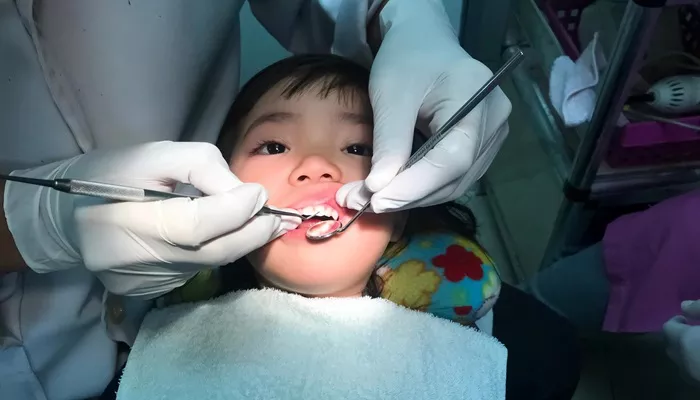Cavities, also known as dental caries, are holes or openings in the hard structures of the teeth caused by acid attacks from bacteria present in plaque. These acids dissolve the minerals in tooth enamel, leading to gradual destruction of the tooth structure. Many people wonder if untreated cavities will eventually lead to the loss of teeth. This guide aims to provide a detailed and scientifically grounded explanation of the progression of cavities and their potential impact on tooth retention, along with subtitles for clarity.
Understanding Dental Cavities
What Are Cavities?
Cavities are a common oral health issue affecting people of all ages. They form when plaque, a sticky film of bacteria, accumulates on the teeth and reacts with sugars and starches from food and drinks to produce acids. These acids attack the tooth enamel, the hardest substance in the human body, causing minerals to dissolve. Over time, this leads to the formation of tiny holes or openings in the teeth, known as cavities.
Risk Factors for Cavities
Several factors increase the risk of developing cavities, including:
Poor oral hygiene: Inadequate brushing and flossing allow plaque to accumulate and remain on the teeth.
Frequent snacking and sipping sugary drinks: This keeps acids in the mouth, attacking the teeth for longer periods.
Dry mouth: Saliva helps neutralize acids and wash away food particles and bacteria. A lack of saliva can increase the risk of cavities.
Diet high in sugars and starches: These foods and drinks provide fuel for the bacteria that produce acids.
Inadequate fluoride exposure: Fluoride helps strengthen tooth enamel and makes it more resistant to acid attacks.
The Progression of Cavities
Initial Stage: Enamel Decay
When a cavity first forms, it affects the enamel, the outermost layer of the tooth. At this stage, the cavity may be small and painless, and it may be detected only during a dental examination or by an x-ray. If caught early, it can be treated with fluoride treatments, sealants, or fillings to prevent further damage.
Advanced Stage: Dentin Decay
If left untreated, the cavity will continue to grow and eventually reach the dentin, the layer of tissue underneath the enamel. Dentin is softer than enamel and contains tiny tubules that lead to the tooth’s nerve center, called the pulp. As the cavity progresses into the dentin, it may cause sensitivity to temperature changes, sweetness, or pressure. At this stage, the cavity is more likely to be painful and require more extensive treatment, such as a larger filling, inlay, or onlay.
Severe Stage: Pulp Involvement
If the cavity reaches the pulp, it can cause severe pain, swelling, and infection. The pulp contains blood vessels, nerves, and connective tissue that are vital for the tooth’s health. When the pulp is infected or inflamed, a root canal treatment may be necessary to remove the infected tissue and save the tooth. If left untreated, the infection can spread to the surrounding bone and tissues, leading to tooth loss.
The Potential for Tooth Loss
Gradual Destruction of Tooth Structure
Untreated cavities will continue to grow and destroy the tooth structure. As the cavity progresses, it can weaken the tooth, making it more susceptible to fracture. If the tooth breaks or fractures, it may need to be extracted.
Abscess Formation
In severe cases, an untreated cavity can lead to the formation of an abscess, a collection of pus that can cause severe pain, swelling, and fever. An abscess can spread to the surrounding bone and tissues, damaging the jawbone and potentially leading to tooth loss.
Periodontal Disease
Untreated cavities can also contribute to the development of periodontal disease, an inflammation of the gums and supporting structures of the teeth. Periodontal disease can lead to bone loss and tooth mobility, increasing the risk of tooth loss.
Preventing Tooth Loss Due to Cavities
Good Oral Hygiene
Brushing and flossing regularly are the cornerstones of good oral hygiene. They help remove plaque and food particles from the teeth and gums, reducing the risk of cavities.
Balanced Diet
Eating a balanced diet that is low in sugars and starches can help reduce the risk of cavities. Choose foods that are rich in vitamins, minerals, and antioxidants to support oral health.
Regular Dental Check-ups
Regular dental check-ups and cleanings are essential for detecting and treating cavities early. Your dentist can use x-rays and other diagnostic tools to detect cavities before they become painful and require more extensive treatment.
Fluoride Exposure
Fluoride helps strengthen tooth enamel and makes it more resistant to acid attacks. Use fluoride toothpaste, mouthwash, and consider fluoride treatments if recommended by your dentist.
Sealants and Fluoride Varnishes
Sealants can be applied to the chewing surfaces of molars to prevent cavities, especially in children and adolescents.
Fluoride varnishes can be applied to teeth to provide additional protection against cavities.
Conclusion
Untreated cavities can lead to severe tooth damage and, ultimately, tooth loss. However, with good oral hygiene, a balanced diet, regular dental check-ups, and fluoride exposure, the risk of cavities and tooth loss can be significantly reduced. If you suspect you have a cavity, see your dentist promptly for diagnosis and treatment to prevent further damage and tooth loss.
Remember, prevention is always the best approach to maintaining good oral health.
Related topics:

